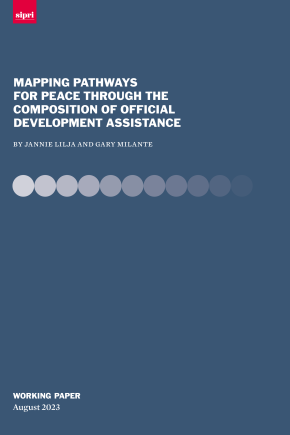Mapping Pathways for Peace through the Composition of Official Development Assistance
Mapping the changing composition of official development assistance (ODA) against peace and conflict patterns in recipient countries over time can enhance the understanding of how pathways to peace look like in practice.
This working paper presents empirical findings from more comprehensive research into the composition of ODA across aid recipient countries in the period 1990–2020. ODA is broken down into humanitarian, development and peacebuilding aid components.
While development assistance is found to dominate across all types of country contexts, and the humanitarian share tends to be larger during conflict, peacebuilding assistance varies by conditions in countries. Post-conflict countries that avoid conflict relapse receive significantly higher shares of peacebuilding aid compared to post-conflict countries that relapse. A ternary graph is introduced to strategically track the composition of the total ODA envelope at the country level during different time periods. The findings suggest that a more effective future deployment of ODA for the advancement of peace and stability is possible.
1. Official development assistance composition
2. Mapping pathways to peace
3. Findings and discussion
4. Recommendations


